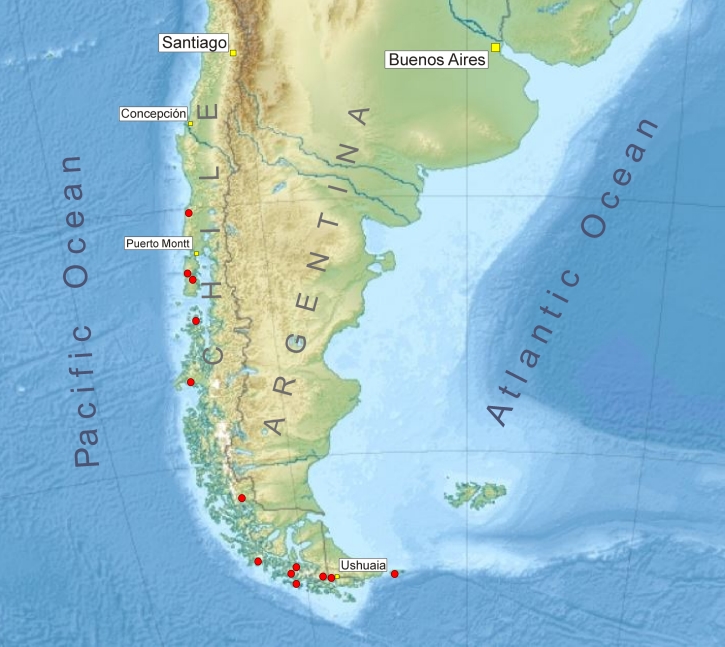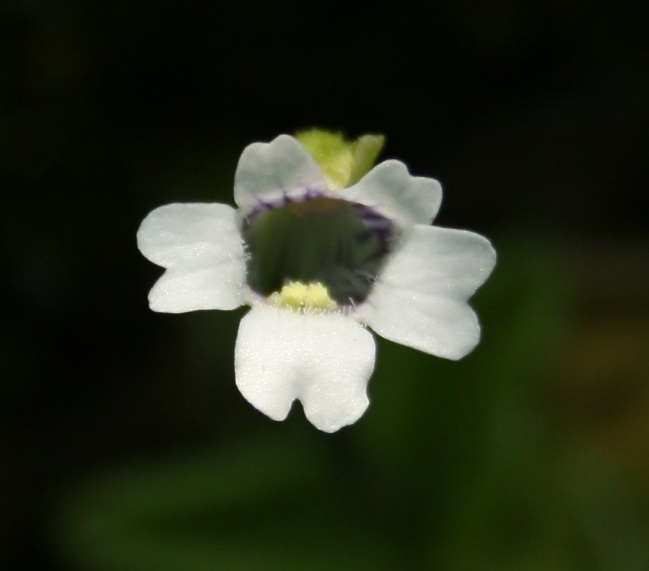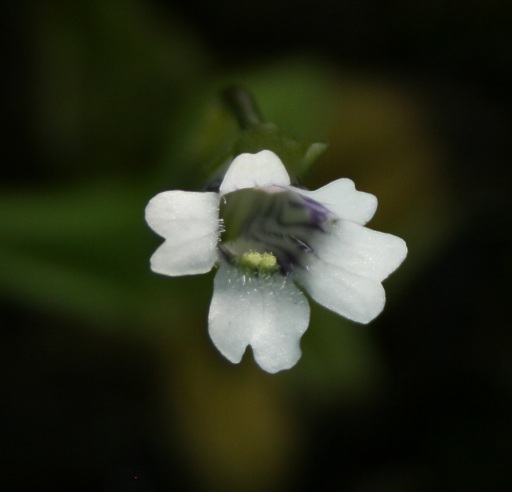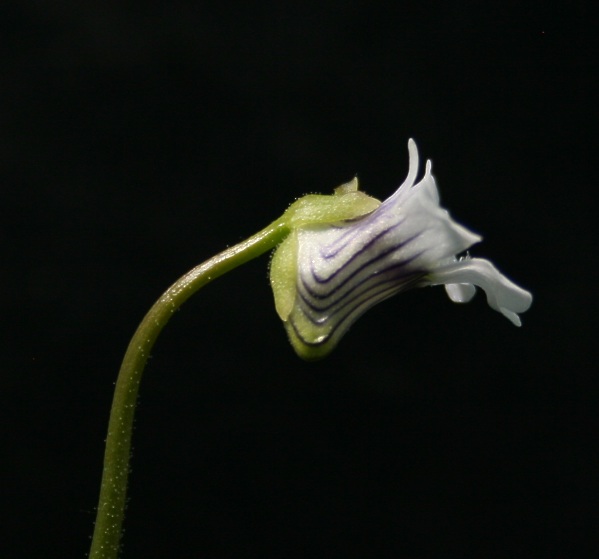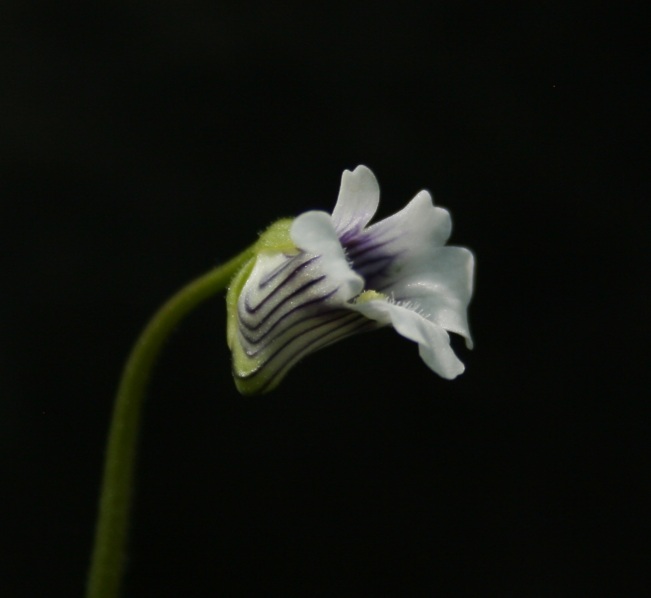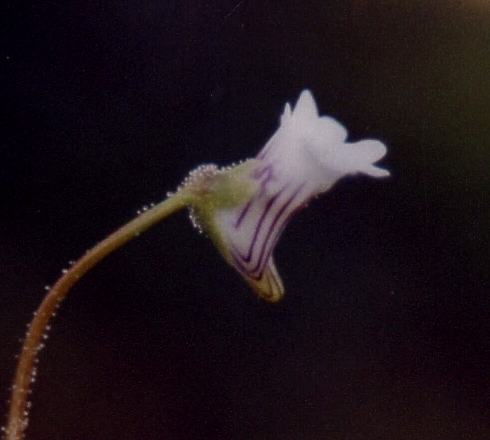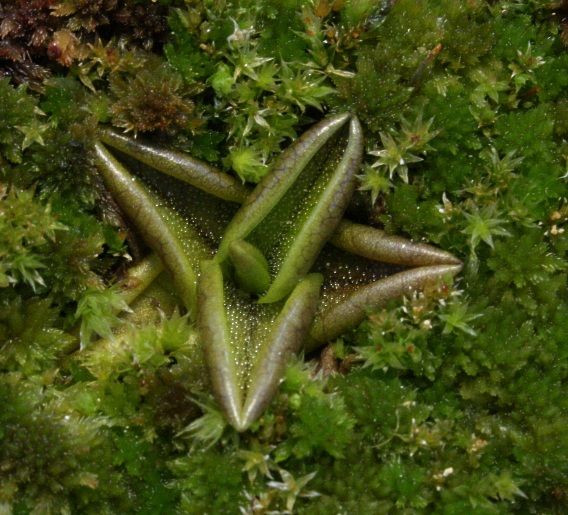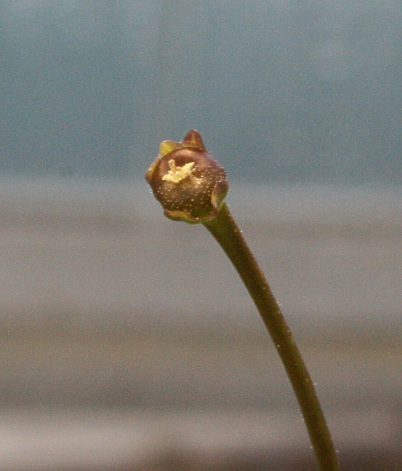
Oliver Gluch's World of Carnivorous Plants or: "What you always wanted to know about butterworts" |
| Impressum |

| Home | Origin | Prey | Species | Plant Purchase | Other Carnivorous Plants | Info about Carnivorous Plants | About me |
Pinguicula antarctica Vahl (1827)Topographic
map
of the southern part of South America with the currently
known locations of P. antarctica (red dots). The
species can be found from the Isla de los Estados in
Argentina along the archipelago of the Magellan Street
and continues further north along the coastal mountains
of Chile. The northernmost point where P. antarctica
is growing is the Valdivian Coastal Mountain range.
Front view of a flower (in culture). The corolla is
bilabiate. The petals of the upper lip are smaller and
less incised compared to the lower corolla lobes>
29th May 2011
A typical morphological character of the flower of P.
antarctica is the palate on the base of the middle
lobe of the lower lip. The palate consists of 2 rows of
yellow hair. The inside of the corolla tube as well as
the base of the lower corolla lobes are covered with
white hair.
29th May 2011 Typical
for
quite a number of other South-American butterwort
species as well, the corolla tube shows a violet
parallel veination. The calyx is also divided into an
upper and a lower lip.
29th May 2011 The
spur
of the flower of P. antarctica ist often very
short and obtuse, sometimes barely separated from the
flower tube.
29th May 2011 With
this
speciman the spur is a little longer and has a light
green colour. The lobes of the calyx are densely covered
with glandular hairs.
12th June 1998 Plant
of
P. antarctica growing in peat moss (in culture).
The margin of the leaves is strongly involute. Grown
under intensive sunlight the lower side of the leaf
margin shows a dark net like veination.
18th April 2011 Immature
seed
capsule. The upper part of the outside of the seed
capsule is also covered with glands. The upper part of
the flower scape is almost glabrous, while towards the
base the number of glandular hairs is increasing.
19th May 2011 |
